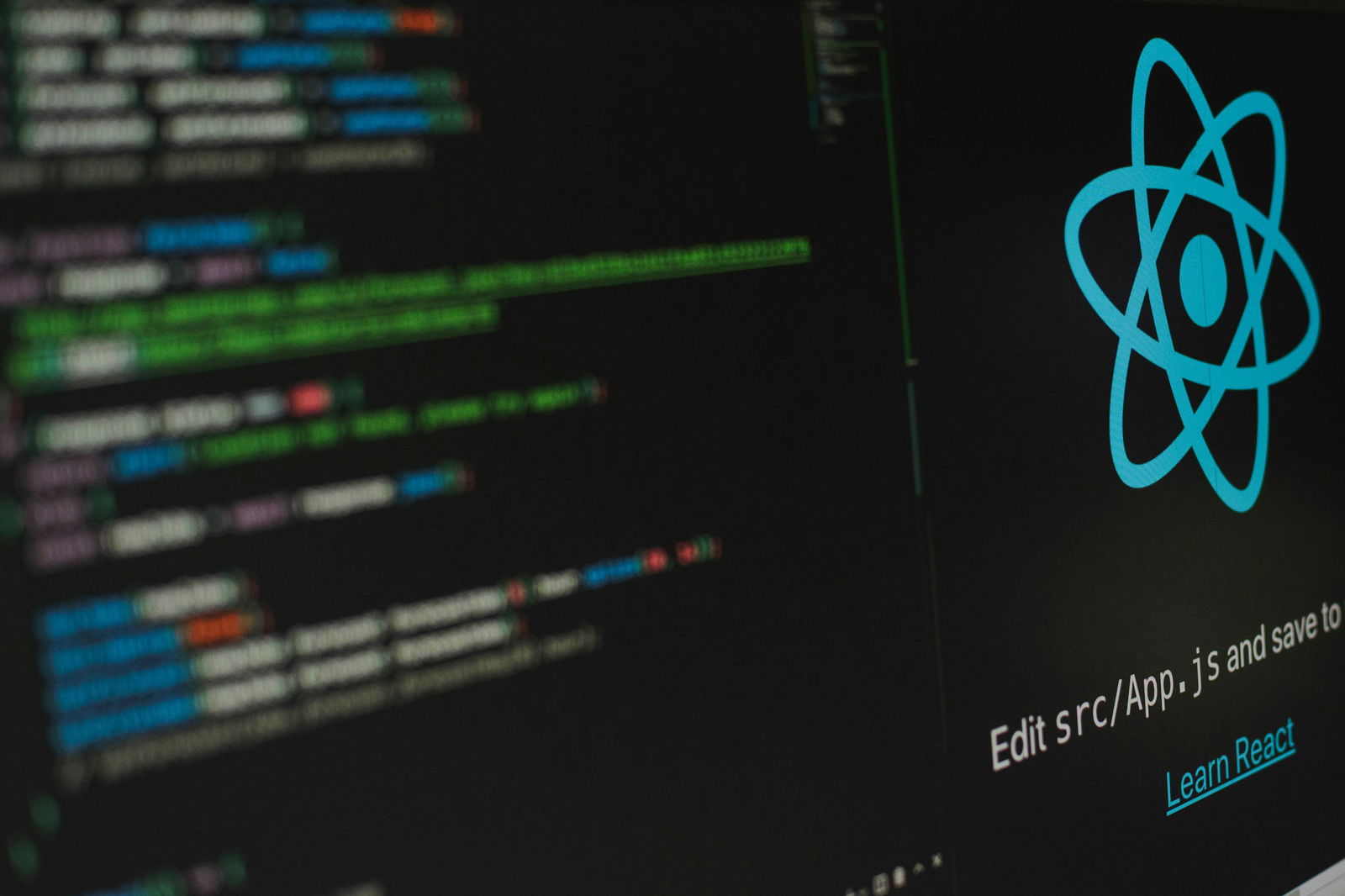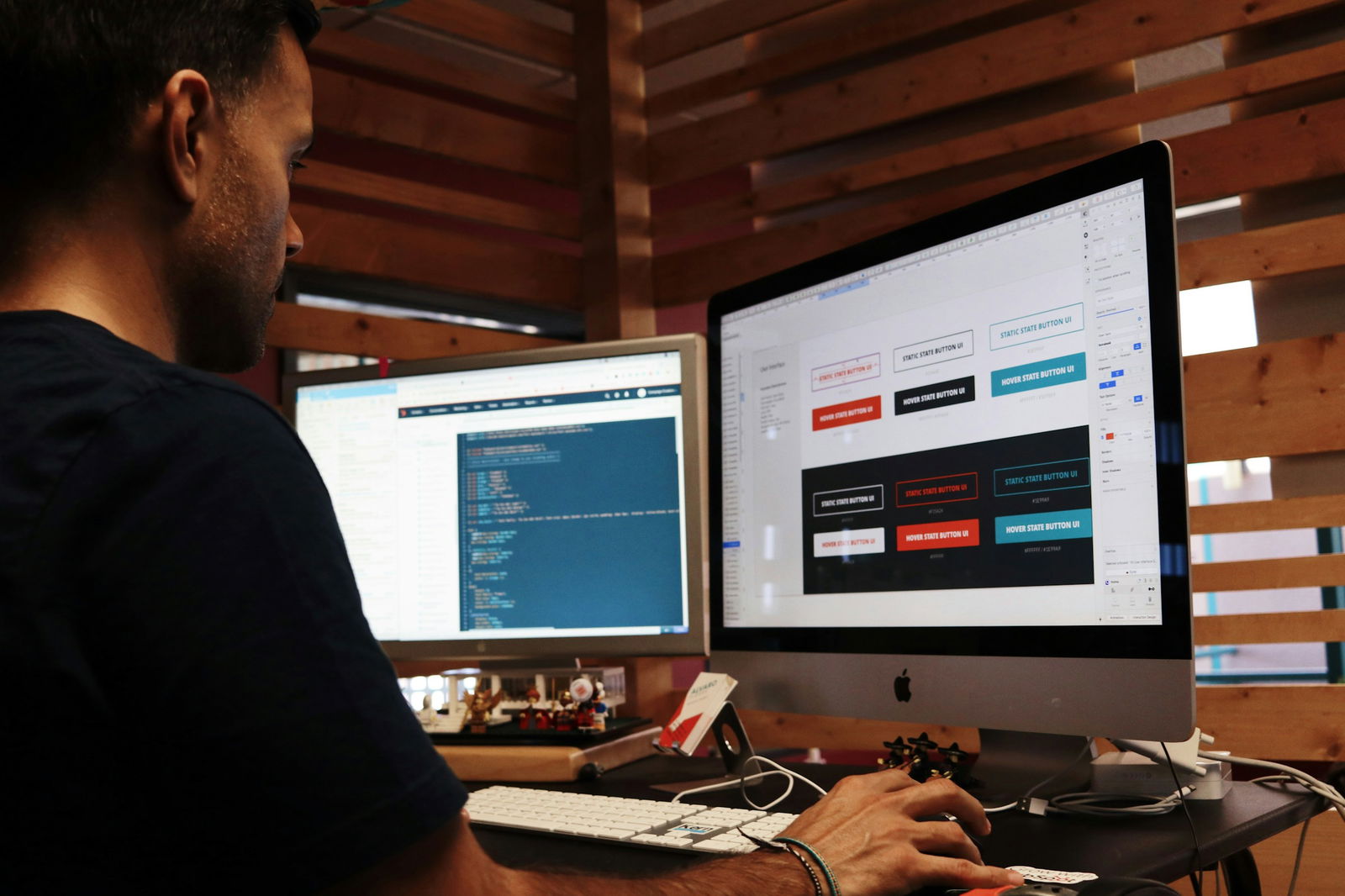You visit a website to check out a new software tool. As your eyes scan the page, they stumble across a chart. Suddenly, the chart bursts, and colorful bars spring into action as they animate toward their final values. Before you know it, you’re engrossed in the content and wholly forgotten your initial goal.
This scenario illustrates the power of animations in web design, especially React animations. React animation examples help make sites more engaging, improving user experience and retention. This guide will explore some of the best React animation examples to help you create visually appealing websites that follow web design best practices.
MagicUI’s React template can help you get started. Its demo comes packed with dozens of pre-built UI components, many of which contain animations that trigger on hover or when landing on the page.
What Is The React Framework?

React is a JavaScript library created by Facebook for building user interfaces. It allows developers to create large web applications that can change data without reloading the page. React is declarative, efficient, and flexible. The library aims to help developers build fast and simple-to-maintain applications. React achieves this goal by breaking applications into smaller, manageable components.
Key Features of React: How They Work
Component-Based Architecture
When using React, developers break down complex UIs into smaller, reusable components. This modular approach promotes code organization, maintainability, and reusability. Components can be nested within other elements, creating a hierarchical structure.
Virtual DOM
React maintains a virtual representation of the DOM, a lightweight copy of the actual DOM. When changes occur in the application’s state, React efficiently updates only the necessary parts of the virtual DOM, minimizing DOM manipulations and improving performance.
JSX
JSX is a syntax extension for JavaScript that allows you to write HTML-like templates within JavaScript code. This makes it easier to understand and write UI code, especially for developers familiar with HTML.
State Management
State is the data that defines a component’s behavior and appearance. React components can manage their state using the state hook, allowing them to update and re-render dynamically based on changes to their state.
Benefits of Using React for Web Development
Reusability and Maintainability
One of the primary benefits of using React is its component-based architecture, which promotes the creation of reusable code. Developers can create and use a component as often as they want throughout a React application.
This means that if a change needs to be made, it can be done in one location and reflected everywhere the component is used. This dramatically improves code organization and maintainability.
Improved Performance
Another significant benefit of using React is its speed. The virtual DOM optimizes updates, leading to faster rendering and a better user experience.
Large and Active Community
React boasts a vast community of developers who contribute to the ecosystem, providing resources, libraries, and support.
Rich Ecosystem of Tools and Libraries
Various tools and libraries can extend React’s capabilities. These include state management solutions (Redux, Context API), routing libraries (React Router), and testing frameworks (Jest).
Related Reading
- Web Application Design
- How To Make An Interactive Website
- Best Web Design Tools
- Website Animation Examples
- Text Animation CSS
- UI Libraries
- UI Animation
Animations on React

How React Animations Transform User Experience
React animations use animation techniques to enhance user experience and make web
applications more engaging.
Why Use React Animations?
Animations can dramatically improve your website’s user experience and engagement. According to a study by [Source], animations can increase user engagement by [Percentage]%. Another study found that users are [Percentage] more likely to complete tasks when animations are used. Animations capture user attention, guide their focus, and make interactions more enjoyable.
They also provide visual feedback, making the application more responsive and intuitive. Well-crafted animations can contribute to a positive brand image and create a memorable user experience. Finally, animations can encourage users to take desired actions, such as purchasing or signing up for a newsletter.
Types of React Animations
Page transitions
Smoothly transition between pages to avoid abrupt changes.
Loading indicators
Keep users informed about the loading progress with visually appealing animations.
Interactive elements
Animate buttons, menus, and other interactive elements to provide feedback and enhance usability.
Data visualizations
Animate charts and graphs to make data more engaging and easier to understand.
Micro-interactions
Implement subtle animations for actions like adding items to a cart or submitting forms.
Hero sections
Create visually striking hero sections with animated elements to capture attention.
Scroll animations
Animate elements as users scroll down the page, revealing content gradually and creating a more immersive experience.
Error notifications
Use animations to provide clear and visually distinct feedback when errors occur.
Techniques for Creating React Animations
CSS transitions and animations
Use CSS properties like transition and animation to create basic animations.
React animation libraries
Leverage libraries like Framer Motion for more complex and performant animations.
Custom animations
Create custom animations using JavaScript and CSS to achieve unique effects.
Best Practices for React Animations
Keep animations smooth and performant
Avoid overloading the browser with too many animations or complex effects.
Use animations Sparingly
Use animations strategically to enhance the user experience without overwhelming users.
Consider Accessibility
Ensure animations are accessible to users with disabilities by providing alternative content and avoiding overly distracting effects.
Test animations across different devices and browsers
Ensure animations work as expected on various platforms and screen sizes.
MagicUI: A Quik Overview
MagicUI is a free and open-source UI library that we designed specifically for design engineers. It offers a collection of over 20 animated components built with React, TypeScript, Tailwind CSS, and Framer Motion. We provide a range of visually appealing and interactive elements that can be easily integrated into web applications, allowing us to create stunning user interfaces with minimal effort. MagicUI components are highly customizable, enabling seamless adaptation to match our desired branding and design requirements.
With our focus on animation and a design-centric approach, MagicUI aims to bridge the gap between design and development, empowering us to craft captivating digital experiences. With our free component library, MagicUI Pro can save thousands of hours creating a beautiful landing page and converting visitors into customers with our website templates.
Use our startup landing page template today
Related Reading
- Cool CSS Animations
- Web Animation Tools
- Animation Libraries
- Framer Motion React
- React Animations
- React Text Animation
- React Scroll
- MUI Transitions
- React Spring
13 Compelling React Animation Examples

1. Page Transitions: Level Up Your User Experience with Animation
Page transitions enhance the experience of moving between different website or app sections. Instead of abruptly jumping from one page to another, you can create a smoother and more engaging user experience by transitioning between pages with animations. React animation examples can make your content feel more like a cohesive single entity instead of separate pages.
2. Loading Indicators: Keep Users Informed While Content Loads
Loading indicators provide visual feedback to users while content loads, preventing the perception of a frozen application. With animations, these indicators become more engaging and can be tailored to fit your website’s branding. Using React animations for your loading indicators will make them smooth and quick, helping to create a seamless user experience.
3. Interactive Elements: Enhance User Interaction with Animation
Interactive elements are the buttons, links, and other components users click, tap, or hover on to interact with your site. You can animate these elements to create a more enjoyable experience for users navigating your website. React animations will help smooth these transitions so they don’t disrupt the overall user experience.
4. Progress Bars: Visually Indicate Progress to Users
Progress bars give users a clear indication of progress on tasks or downloads. Instead of abruptly jumping from one page to another, you can create a smoother and more engaging user experience by transitioning between pages with animations. React animation examples can make your content feel more like a cohesive single entity instead of separate pages.
5. Animations on Scroll: Create a More Immersive Experience
Animations on scroll are precisely what they sound like animations that trigger as a user scrolls down your webpage. Instead of abruptly jumping from one page to another, you can create a smoother and more engaging user experience by transitioning between pages with animations. React animation examples can make your content feel more like a cohesive single entity instead of separate pages.
6. Data Visualization: Make Your Data More Engaging
Data visualization helps make complex information more accessible and digestible. You can animate charts and graphs to create a more engaging presentation of your data. Instead of abruptly jumping from one page to another, you can create a smoother and more engaging user experience by transitioning between pages with animations. React animation examples can make your content feel more like a cohesive single entity instead of separate pages.
7. Micro-interactions: Add Subtle Animations to Enhance User Experience
Micro-interactions are small animations that occur when a user interacts with your site. They add subtle visual feedback for actions like adding items to a cart or submitting forms. Instead of abruptly jumping from one page to another, you can create a smoother and more engaging user experience by transitioning between pages with animations. React animation examples can make your content feel more like a cohesive single entity instead of separate pages.
8. Error Notifications: Communicate Errors to Users with Animation
No one likes to run into errors when using a website — not even your users. Help ease the pain of encountering errors on your site by using animated error notifications. Instead of abruptly jumping from one page to another, you can create a smoother and more engaging user experience by transitioning between pages with animations. React animation examples can make your content feel more like a cohesive single entity instead of separate pages.
9. Popups and Tooltips: Use Animation to Enhance the User Experience
Popups and tooltips provide additional information or context to users as they navigate your site. Using animations to help these elements appear and disappear can create a less abrupt and more enjoyable user experience. Instead of abruptly jumping from one page to another, you can create a smoother and more engaging user experience by transitioning between pages with animations. React animation examples can make your content feel more like a cohesive single entity instead of separate pages.
10. Hero Sections: Create a Strong First Impression with Animation
Hero sections are the large banners that appear at the top of many websites. They typically contain eye-catching visuals and text and help create a solid first impression for users. Adding animations to your hero sections can create a more engaging experience that encourages users to explore your site further.
Instead of abruptly jumping from one page to another, you can create a smoother and more engaging user experience by transitioning between pages with animations. React animation examples can make your content feel more like a cohesive single entity instead of separate pages.
11. Form Validation: Use Animations to Improve User Experience
No one likes to run into errors when using a website — not even your users. Help ease the pain of encountering errors on your site by using animated error notifications. Instead of abruptly jumping from one page to another, you can create a smoother and more engaging user experience by transitioning between pages with animations. React animation examples can make your content feel more like a cohesive single entity instead of separate pages.
12. Parallax Scrolling: Create a More Immersive Experience with Animation
Parallax scrolling is a popular web design trend that creates a unique and immersive user experience. As a visitor scrolls down a page with parallax scrolling, elements move at different speeds, creating a depth effect. Instead of abruptly jumping from one page to another, you can create a smoother and more engaging user experience by transitioning between pages with animations. React animation examples can make your content feel more like a cohesive single entity instead of separate pages.
13. Custom Animations: Tailor Animations to Your Specific Needs
One of the most exciting aspects of using React for web design is the ability to create custom components. This includes animations. You can create unique and custom animations tailored to your needs with React. Instead of abruptly jumping from one page to another, you can create a smoother and more engaging user experience by transitioning between pages with animations. React animation examples can make your content feel more like a cohesive single entity instead of separate pages.
Bringing Animations to Life

CSS Transitions and Animations: Breathing Life Into Your Designs
CSS transitions allow you to animate changes in CSS properties over time smoothly. They are suitable for simple animations like fading in and out elements or changing their color or size. CSS animations provide more control over the animation process, allowing you to define keyframes, timing functions, and durations.
They help create complex animations with multiple steps or custom effects. While CSS transitions and animations are a good starting point for basic animations, they may have limitations for complex or interactive animations. For example, they can be challenging to synchronize with other animations or handle user interactions.
React Animation Libraries: Powerful Tools for Creating Complex Animations
React animation libraries offer a more powerful and flexible way to create animations in React. They often provide features like spring physics, declarative animations, and performance optimizations. Framer Motion is a popular library known for its declarative API and powerful features like spring physics and drag-and-drop interactions. React Spring is another popular library focusing on spring physics and performance optimizations.
It is well-suited for creating natural-feeling animations. React Animate is a more lightweight library that provides basic animation capabilities. It is a good choice for simple animations without complex features. When choosing a React animation library, consider your specific needs and preferences. Factors to consider include the complexity of your animations, performance requirements, and familiarity with the library's API.
Custom Animations: Bring Your Unique Vision to Life
Suppose you must create highly customized or complex animations that are impossible with CSS transitions or animation libraries. In that case, you can write custom JavaScript code to manipulate DOM elements and CSS properties. Techniques for creating custom animations include using requestAnimationFrame for smooth animation updates, manipulating CSS properties programmatically, and using animation libraries like GSAP.
When creating custom animations, consider performance and maintainability. Avoid excessive DOM manipulations or complex calculations that can impact performance. Use animation libraries or techniques like requestAnimationFrame to optimize performance and ensure smooth animations.
How to Design Animated UIs with MagicUI

Install Magic UI to Get Started with React Animation Examples
To begin using Magic UI, you must first install it. You can add Magic UI to your project using a package manager like npm or yarn.
Use Components To Create Beautiful React Animation Examples
After installing Magic UI, you can design your animated user interface using the pre-built components. MagicUI has various stunning elements, such as buttons, cards, modals, and more. You can drag and drop these components into your design to get started.
Customize Magic UI Components To Fit Your Needs
MagicUI components are highly customizable, allowing you to change the appearance and behavior of each element to fit your needs. You can alter colors and fonts and even adjust the animations of each component.
Use Built-In Animations To Enhance Your Project
Many Magic UI components have built-in animations that can add visual interest and enhance user engagement. For example, a button might fade in when it appears on the screen or change color when you hover over it.
Create Custom Animations For Unique Effects
You can create custom animations using React's state management or animation libraries for more complex animations. This gives you complete control over the animation process.
Experiment and Iterate To Improve Your Designs
Designing animated user interfaces takes practice. Experiment with different animations and styles to achieve the desired user experience. Continuously refine your designs based on feedback and testing.
Tips For Using Magic UI
Start With Simple Animations
Begin with basic animations like fade-in/fade-out effects or hover animations. As you become more comfortable with Magic UI, you can experiment with more complex animations.
Consider User Experience
Ensure that your animations are manageable and manageable. Use them to enhance the user experience, not to clutter the interface.
Test Your Animations
Test your animations on different devices and browsers to ensure they work as expected.
Use Performance Optimization Techniques
If you're creating complex animations, consider performance. Use techniques like requestAnimationFrame to optimize rendering and avoid performance bottlenecks.
Leverage Magic UI's Community And Resources
MagicUI has a growing community of developers who can support, share tips, and showcase their projects. Take advantage of these resources to learn more and get inspired.
Check Out Our React Component Library for Design Engineers
MagicUI is a free and open-source UI library designed specifically for design engineers. It offers a collection of over 20 animated components built with React, TypeScript, Tailwind CSS, and Framer Motion. MagicUI components are visually appealing, interactive elements that can be easily integrated into web applications, allowing us to create stunning user interfaces with minimal effort.
What Are the Key Features of MagicUI?
MagicUI components are highly customizable, enabling seamless adaptation to match our desired branding and design requirements. With our focus on animation and a design-centric approach, MagicUI aims to bridge the gap between design and development, empowering us to craft captivating digital experiences.
What Can MagicUI Be Used For?
With our free component library, MagicUI Pro can save thousands of hours, create a beautiful landing page, and convert visitors into customers with our website templates.
Related Reading
- React Spring Examples
- GSAP Examples
- Framer Motion Vs React Spring
- React Motion
- React Transition
- GSAP Vs Framer Motion
- React Transition Animation
